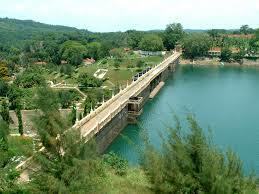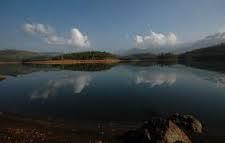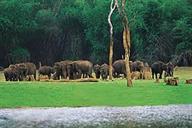Nature becons you with beauty at Peppara
Peppara dam is situated across the Karamana River. This dam is situated roughly 47 kilometres from the Thiruvananthapuram district of Kerala. There is an adjacent wildlife sanctuary. The dam was commissioned in 1983 to provide some relief to people who were suffering due to the scarcity of potable water in the city. The government at that time took cognisance of the report on its ecological importance. Hence, it had declared the catchment area of the dam and the river as the protected biological reserve.
Peppara Dam
The water flowing in the Karamana river stream is stored by building a dam across it to create a reservoir. The total capacity of the reservoir is 5.82 square kilometres. This reservoir has been developed to provide fresh drinkable water to the inhabitants of the adjacent Trivandrum city. In the recent past, the dam site was beautified and renovated by a consortium of agencies consisting of the Kerala Tourism, the Kerala Forest and the Kerala Water Authority departments of the government of Kerala. As a result, the dam site houses facilities that provide more entertainment and leisure to visitors. People swear by the Almighty that this place is a worth-seeing place. A visit to the dam premises offers a totally different experience altogether to people as they would be taken to a different world with floating clouds, cool breeze, etc. Get there to experience firsthand the visual treat it offers you!!
Peppara Wild Life Sanctuary
This sanctuary has huge ecological significance. It is located on Thiruvanthapuram-Ponmudi Road. The sanctuary is located about 50 kilometres away from the state capital in the northeast direction. The area coming under this reserve was formerly part of the Paruthippally range of the Thiruvananthapuram Territorial Division coming under the Kerala Forest Department. The forest cover in this area is immense. It consists of part of Palode and part of Kottoor bio reserves. About 24 square kilometres of Palode range and 29 square kilometres of Kottoor range have been joined together to create Peppara Wildlife Sanctuary. Mainly the terrain inside this biological reserve is hilly in nature. The elevations within it vary from 100 metres to 1717 metres from the sea level. The flora and fauna of the sanctuary are sustained by the water from Karamana River and its tributaries. The peaks that can be seen within the sanctuary include Athirumalai, Koviltherimalai, Chemmunjimottai, Arumukhamkunnu and Nachiyadikunnu. Reaching many of these areas is a difficult task as it involves a lot of trekking exercise from visitors' side.
Flora and Fauna
The catchment area of the Peppara dam has different forest types. One can see tropical evergreen forest in the southern hilltop. On the other hand, one can see semi-evergreen forest in the western side. On moving to the southern side, the sanctuary has a mixture of vegetation. Here, the visitors can see the rich blend of various types of forests. The sanctuary also has a rich population of mammals. Visitors to this beautiful sanctuary would be exposed to different types of birds. Hence, it is fast emerging as the destination of bird-lovers and ornithologists. In all, visitors can find 233 species of birds, 13 species of amphibians, 46 species of reptiles and 27 species of fishes in this sanctuary. The animals found in this biological reserve include Sloth Bear, Tiger, Elephant, Lion, Nilgiri Langur, Sambar, Nilgiri Tahr, Bonnet Macaque, etc. The reservoir and its adjacent wildlife sanctuary are also famous for hosting the migratory birds. The Biology students from adjacent colleges make it a point to visit this place to get the first-hand exposure to the nature in its unblemished form. They later make the project report as part of their academics and submit them to the Kerala University.
Facilities Available
Being close to Thiruvananthapuram city, it is a nice destination of people seeking nice outing during the weekends. Due to the word-to-the-ear networking, more people are getting aware of the presence of this beautiful reserve in their neighbourhood. Hence, it is also becoming the most sought after destination for holiday revelers who want to escape from the intense heat of the summer season. The area can be accessed by means of road. People visiting the nearby hill station make it a point to visit this place as well. More guides operating in that area make sure that the incoming tourists at Ponmudi station also visit this beautiful bio reserve and dam. The sanctuary is open throughout the year. However, the best time to visit in this place is between January and March every year. People visiting this sanctuary can go for the following activities at a reasonable cost. Hence, the visited would be a worth to the money spent there to become part of the nature.Conclusion
It is the most desirable idyllic location for people who wanted to spend quality time with the family from the chaos of the city life. Being just 50 kilometers from the state capital, it has become a most sought-after destination for the people during their weekends. Its rich flora and fauna adds more beauty to it. The visit to the dam site provides totally different experience altogether. The place provides a lot of avenues for the adventure seekers as people can trek their way to various waterfalls that dot the region. Hence, it is good to venture into this wonderful habitat whenever you get free time with your family. From some places, you may be able to get the wonderful view of the land below. This would be the ultimate reward for all the work you do when you trek your way to the top elevations in the biological reserve. So, don't miss the chance to become part of the nature!!

 Job oriented
Job oriented